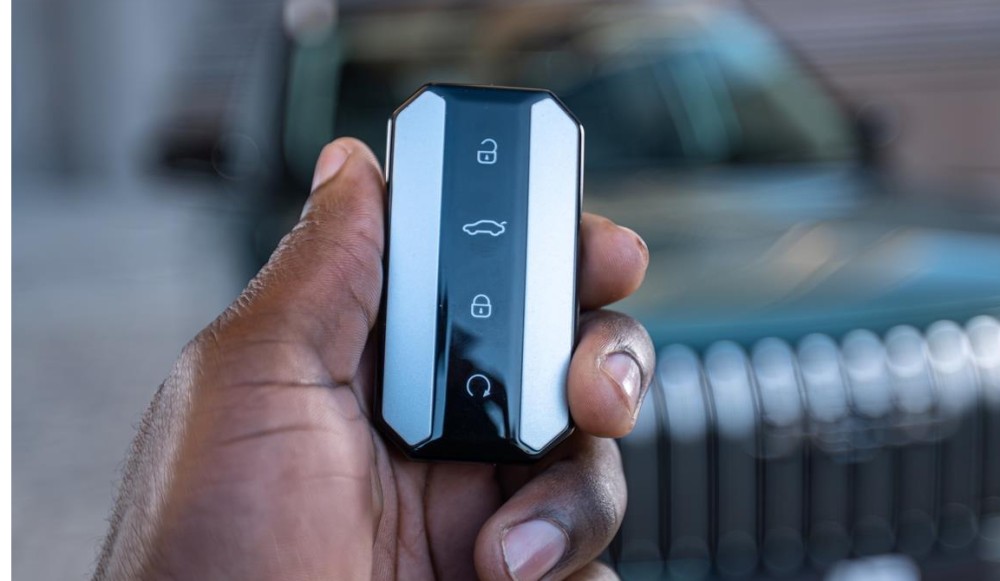Follow these four tips to improve road safety for yourself and those around you.
Having recently had opportunity to travel quite a distance with an Uber driver gave me opportunity to observe his driving technique. And, while he certainly was being careful with his human cargo, there were nonetheless still some bad habits in evidence which, if effectively attended to, would improve the safety of this driver, his passengers, and his fellow road users.
Even experienced drivers collect bad habits over time, and most of us have acquired some nasties of which we are quite unaware over the years after passing our K53 driving tests. Most of these points will appear obvious at face value, but venturing on the roads also shows that many, many drivers simply don’t think of the implications of these actions, either.
1. Keep left, pass right
You’d imagine that the most fundamental rule in our road regulations is easy enough to remember, yet it seems that far too many drivers are blissfully unaware of this imperative. Anyone who frequently drives on the freeway will have encountered those drivers who, immediately after merging with the traffic, proceed to meander over to the far-right lane and then simply squat there at whatever speed they prefer to drive - usually about 15 km/h under the indicated speed limit.
This behaviour is highly illegal, because the South African road ordinances clearly state that all drivers must keep to the left of the road, and only move into the right lane when overtaking a slower vehicle. Once past that slower vehicle, the driver must vacate the right lane again by moving back to the left, to in turn clear the way for other drivers to safely overtake them.
“But I’m going 120, and that’s the speed limit so nobody is supposed to drive faster anyway”, I may hear you say. That may be true, but this reasoning still doesn’t supersede the first rule, which is keeping left and only using the right lane for passing.
In short, it is not any driver’s place or prerogative to attempt to enforce speed limits upon other drivers, because that duty falls on the brave people who operate those life-saving speed cameras with the primary aim of filling their local authorities’ coffers.
Why is sticking in the right lane so dangerous?
Whether you like it or not, impatient drivers will always be around. And, if you’re clogging up the passing lane, those drivers will find a way around you, quite possibly breaking more rules than simply speeding. This will often entail passing you on the left, where said impatient driver may not notice a slower vehicle in the left lane, leading to dangerous swerving maneuvers and possibly running both yourself and the law-obedient driver in the slower lane off the road in the process.
So, even if your instinct may say “I’m doing the speed limit and so should he”, that self-righteousness will play as big a part in a potential collision as the speeding driver’s impatience. If nothing else, think about the innocent road users around you, and weigh their safety over your desire to hog the right lane through either ignorance, laziness or spitefulness.
2. Pay attention to your surroundings
It’s one thing to stay in your lane and stick to the speed limit, but even those measures cannot ensure your safety when it comes to other road users and difficult road conditions.
Paying attention to the other road users on all sides enables you to anticipate their movements with reasonable accuracy, and will give you enough time to respond to an unexpected hazard. You will be more aware of possible escape routes in an emergency situation, and may even help you to predict an impending accident before it even starts happening. Being aware of the vehicles in your blind spots will likewise eliminate potentially dangerous lane-changing maneuvers. Don’t think only for yourself, but for the drivers around you as well.
The road condition is just as critical to your safety, especially as our road network crumbles away under the combined load of heavy traffic, ever-heavier vehicles, and a lack of road maintenance. What used to be potholes are now sinkholes, what used to be ditches are now trenches - and they all have the potential to, at the very least, destroy your vehicle’s tyres and suspension. Consequently, paying attention to the road surface itself is critical your personal safety, as a tyre failure or suspension collapse (especially at speed) can cause loss of control over your vehicle.
And, when the road is wet, don’t drive through puddles, no matter how great the temptation, because water has the superpower of providing perfect hiding places for potholes. It stands to reason that wet roads are more slippery as well, so reduce your speed by about 10% just to be safe, and avoid sudden inputs to the steering wheel, brakes, or accelerator when you’re driving on wet roads.
3. Match the traffic speed when merging
There is a very good reason why freeway on- and off ramps are quite long: to give drivers ample time to adjust their speed to upcoming driving conditions. It’s nice of the road engineers to provide this facility, so please use it to accelerate up to a speed where your vehicle matches that of the existing traffic stream before merging with the freeway traffic.
Failure to do so will suddenly slow down the freeway’s leftmost lane as you insert your vehicle into the traffic flow, forcing hard braking to avoid drivers coming from behind hitting your vehicle, and causing innocent drivers much further back to swerve into adjacent lanes to avoid collisions, thus slowing down entirely unrelated sections of the freeway in the process. This increases the risk of accidents for other road users of whom you are not even aware. Put your accelerator foot to the carpet when the on-ramp exit appears, because your car will need some time to get up to a suitable speed.
The same applies on freeway off-ramps, where it is advisable to use the entire length of the off-ramp to gradually reduce your speed in preparation for a turn or traffic light up ahead. Don’t slam on the anchors the moment you enter the off-ramp, but don’t leave it until the last moment as you’re bearing down on the bunched-up and standing traffic ahead of you, either. Just use the whole length of road put there to speed up or slow down gradually, and you and everybody around you will be happier and safer.
4. Put down your phone!
Phone use has been proven to cause distracted driving, yet many road users still don’t seem to understand this. Leaving aside the facts that it is completely illegal to operate a mobile device while driving and that most cars have Bluetooth connectivity built-in nowadays, the reality is that operating a mobile device diverts attention from the road and your vehicle to the little touchscreen torture device in your hand.
This not only relates to paying attention to your surroundings, either, because the mere act of holding a phone in your hand while driving removes one of the hands you need to control the vehicle from the equation. Don’t think holding the phone horizontally and on speaker phone in front of your face makes any difference either - the phone doesn’t have to be near your ear for its operation to be illegal.
Always enter your navigation destination into the phone app before setting off and never while driving, don’t answer incoming calls unless your phone is connected to the vehicle via Bluetooth, and resist the temptation to “quickly” reply to that text message or email, because that may just be the last time you’ll ever divert your attention from the road!
- Martin Pretorius
Proudly ALL THINGS MOTORING








